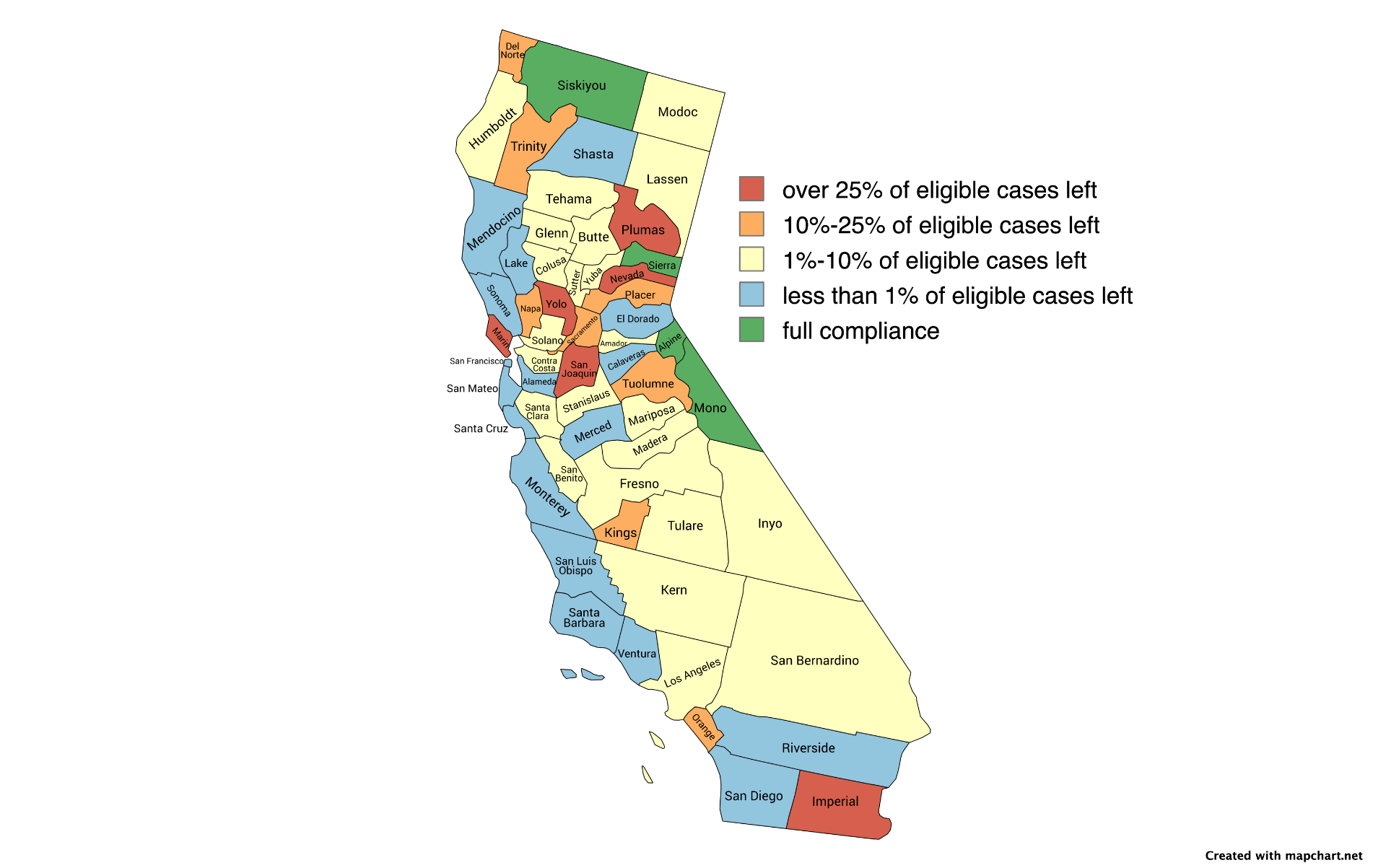California is seen as an extremely progressive state, especially when it comes to marijuana policy. It was the first state to legalize marijuana for medical use and legalized marijuana for recreational use 8 years ago. Still, there are thousands of marijuana convictions in the state’s criminal history database. Even after a person has served their time for a criminal offense, their criminal

record is publicly accessible. Criminal records can limit a person’s ability to rehabilitate into society through discrimination in housing, education, and employment. Black Americans are 3.64 times more likely than White Americans to be arrested on simple marijuana possession charges nationwide, and this differs between states and counties. Erasing criminal records is one way to begin to correct systemic injustices. Other states have enacted record clearance programs specific to marijuana, but California has been one of the most proactive. Not only did Proposition 64 legalize marijuana in California, it also included a provision that allowed people to file a dismissal or expungement for marijuana offenses that were newly legal under the proposition. This provision was updated in 2018 with the passage of Assembly Bill 1793. AB 1793 changed the process for record clearance so instead of a person who held the record filing for a dismissal or expungement, the state of California would initiate and conduct the process itself. This is known as an automatic expungement system. The CA Department of Justice identified the eligible cases, and county prosecutors and courts were authorized to challenge or dismiss these cases.
As a student majoring in Policy Analysis, I was interested in studying how the successes and failures of policy’s implementation could be used as an example for other states. I analyzed the implementation of AB 1793 in 2019, and the consecutive Assembly Bill 1706 that was passed in 2022 to guide AB 1793’s implementation. AB 1793 did not initially provide a date for the courts to actually change the sentences by, so there were wide variations in implementation across California’s 58 counties. AB 1706 required the publication of 6 progress reports issued quarterly from March 2023 to June 2024. This is where I was able to collect data on the expungement rates in each county based on the identified eligible cases. I combined this with data from the 2020 US Census and the 2020 presidential election vote shares of each county to create a predictive model. Specifically, I was interested in examining how the population size, percent of white, black, and hispanic residents, and the political makeup of counties impacted their likelihood to expunge identified cases.
I ran a regression analysis in STATA using my above mentioned variables. I predicted that counties with a larger population would expunge more cases. Counties that voted for Biden in 2020 would expunge more cases because their democratic views would put them in line with the majority democratic legislature that passed the assembly bills. I also thought the percentage of Black residents in a county would have more impact than any other demographic factor. I hypothesized that if Black residents were more likely than their White counterparts to be arrested for low level marijuana offenses, more Black offenders would be eligible for record changes.
My results were not what I predicted. The 2020 presidential votes from each county were not statistically significant, and neither was the percentage of Black and Hispanic residents. I did find that for every additional thousand people a county had, 5 more cases would be expunged. The only demographic factor that had a statistically significant effect on expungements was the percentage of white residents. For every additional 1% of white residents in a county 100 more cases were likely to be expunged. Although my findings were not what I predicted, the California policy still shows a relationship between race and expungement rates.
As states continue to legalize marijuana, I recommend they pursue automatic record clearance policies while learning from California’s implementation. When the law gave strict deadlines for the Department of Justice and prosecutors were able to provide the needed information on time. The courts actually held the power to change the conviction classifications, but differed across all 58 counties. Some were in full compliance with the law, others had as many as 85% of cases left to be re-designated. The difference in compliance depended mostly on the percentage of white residents in each county and the population size.
Leave a Reply